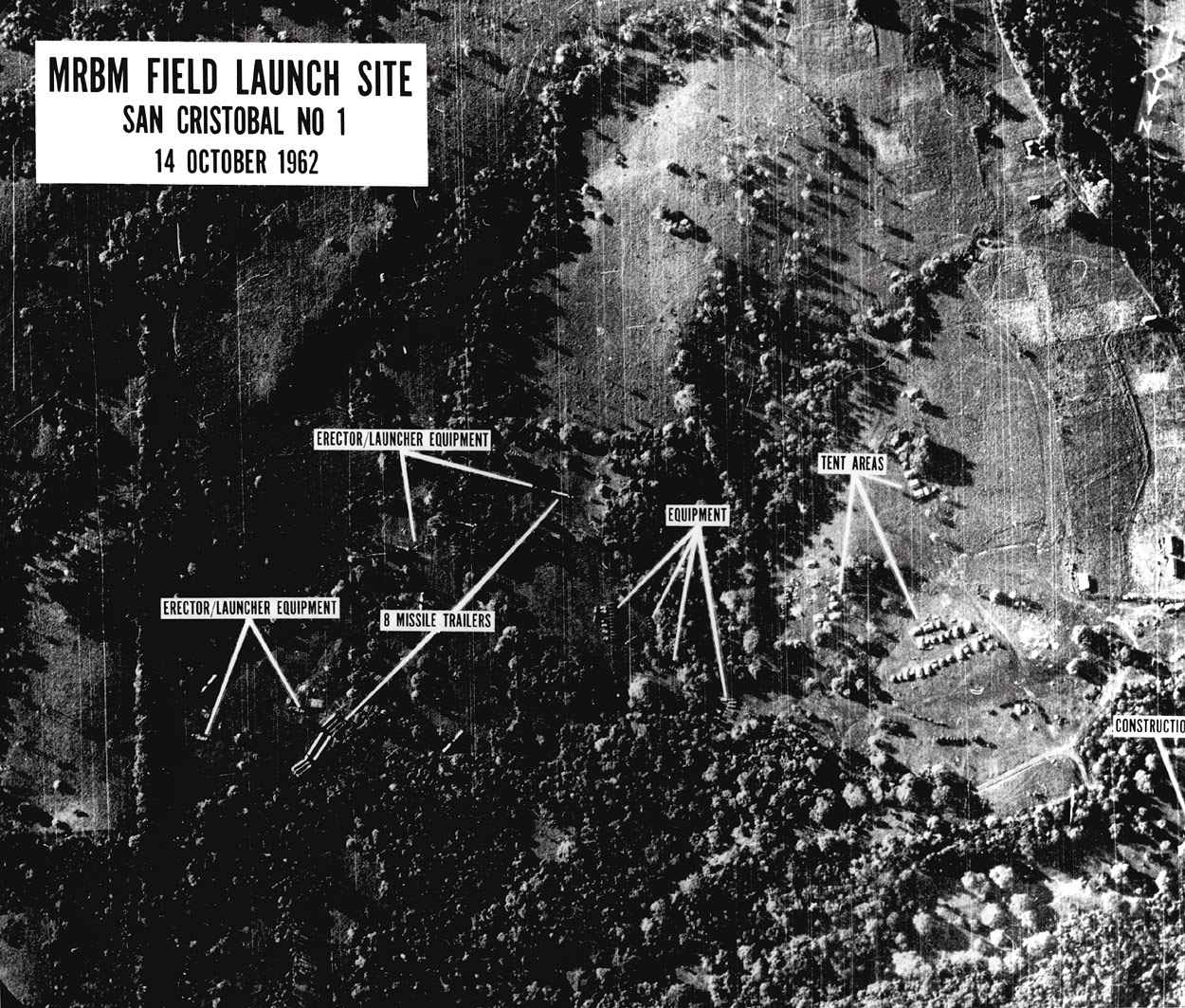October 15th in the Cuban Missile Crisis

The Spy Agency Over a Car Dealership
Yesterday, October 14, 1962, Major Richard Heyser, flying a U-2 spyplane, flew over Cuba taking pictures. The film taken by Major Heyser’s U-2 pass over Cuba was developed overnight by the US Navy photographic lab. Several hours before dawn on this Monday the pictures were delivered to the NPIC (National Photographic Interpretation Center), located in a dilapidated neighborhood of Washington DC, on the second floor above a run-down car dealership. The humble facade concealed the most advanced photo analysis lab in the world. A team of civilian and military analysts studied the pictures for more than twelve hours. Using data already gathered from spies, public Soviet displays, and earlier photo recon flights over Russia, the men at NPIC confirmed that Soviet strategic missiles were being installed in Cuba.
That evening NPIC director, Art Lundahl, called JFK’s National Security Advisor, McGeorge Bundy, to report the findings. Lundahl was told to prepare for detailed briefings at the White House, to begin Tuesday morning, October 16.
Guest post by Douglas Niles, author of Final Failure: Eyeball to Eyeball, an alternate history of the Cuban Missile Crisis. Doug and I co-authored three alternate history military thrillers: Fox on the Rhine, Fox at the Front, and MacArthur’s War. He is also known for his fantasy novels and is an award-winning game designer.
Follow the inside story of the Cuban Missile Crisis as it evolves day by day from now through October 28!
Read: Beginning of the Series Tomorrow
(Image: Photograph of Cuban missile site taken by U-2 spyplane, October 14, 1962.)